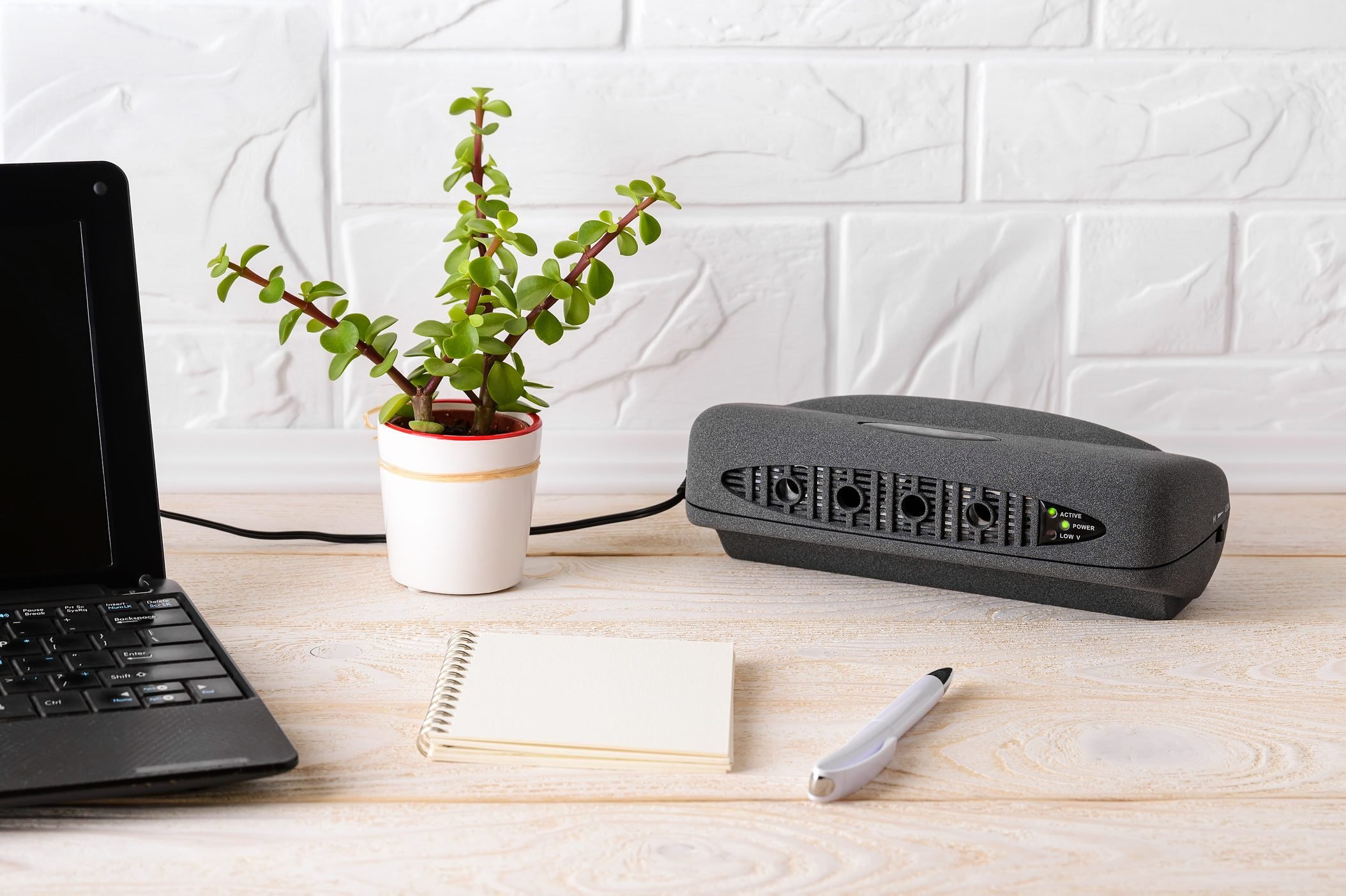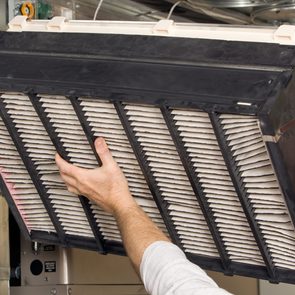What Is an Ionic Air Purifier—and Should You Get One?
Updated: Mar. 30, 2022
Ionic air purifiers use a cool chemical reaction to clean the air like tobacco smoke—but they may not be a good investment.
What’s in the air?
With worries about airborne transmission of Covid-19, people are thinking a lot more about what’s in the air in indoor spaces and considering ways to cleanse that air. That’s where an air purifier can help, although not all air purifiers are the same—and ionic ones may be more trouble than they’re worth.
Issues relating to indoor air quality are not new, says indoor air quality scientist Richard Shaughnessy, who runs the Indoor Air Program at Tulsa University in Oklahoma. “Concerns related to indoor air quality have been around for centuries and then some,” he says.
Viruses like SARS-CoV-2, the virus that causes Covid-19, are far from the only thing swirling around in the air, he says.
“We often think of air quality in the outdoor environment, but there are many types of pollutants in the indoor environment that people don’t really pay attention to,” says Shaughnessy. “We have mold, we have volatile organic compounds, we have particulate matter in the air that can be problematic.”
Other allergens from dust mites, pets, and cockroaches can also contribute to poor indoor air quality.
(These are the household items poisoning your air.)
Fighting poor indoor air quality
The first line of defense against poor indoor air quality is removing the source of the contaminant, experts say.
For example: “If you live close to a highway, it’s not opening windows during times of high traffic,” says Patricia Fabian, an indoor air expert and associate professor in Boston University’s School of Public Health. “It’s not burning candles and incense,” she says.
Next, it’s ventilation. “This means we bring in fresh air to dilute concentrations indoors,” says Shaughnessy. (These are the best air-cleaning plants to detoxify your home, according to NASA.)
And finally, air cleaning, using an air purifier, can help, says Shaughnessy. But not all air purifiers are created equal.
“You have air cleaners that can be very effective at lowering concentrations of particles,” he says. “But then there are air cleaners that are kind of hyped, but they simply do not provide the benefits.”
Ionic air purifiers fall into that category, he says. Here’s what you need to know about ionic air purifiers.
How do ionic air purifiers work?
You’ll need to think way back to high school chemistry here. An ion is an atom or molecule with a charge—it could be a positive or a negative charge, depending on how many protons and how many electrons it has. Ions with a negative charge and ions with a positive charge are attracted to each other.
Ionic air purifiers generate and emit negatively charged ions into the air, which attract other particles, causing those particles to be charged.
“Those particles are attracted either to a charged component in the cleaner itself or often just to other particles or to surfaces in the room,” explains Emily Jones, a researcher in Harvard University’s T.H. Chan School of Public Health.
If they are attracted to other particles, they become bigger and gravity pulls them down to surfaces or the floor more quickly. If they are attracted to surfaces or the charged component of the air cleaner, they are pulled directly there.
In all three of the scenarios, the particle—whether it’s a virus, a mold spore, or particulate matter, is no longer in the air.
Some ionic air purifiers are part of units that use other technology, as well, like filtering particles with a high-efficiency particulate air filter (HEPA) while others are stand-alone devices.
In some cases, they are designed to clean the air in an entire room. Other times, they are small devices that plug in and sit in a wall socket, meant for smaller areas.
Personal air purifiers, like those you wear around your neck, and car air purifiers typically use ionization technology.

Are ionic air purifiers effective?
On its website, the Environmental Protection Agency (EPA) says that while ion generators may remove small particles from the air, like those from tobacco smoke, they are less effective at removing larger particles, like pollen or house dust allergens. And if your main concern is gas or odor, the EPA says they are not effective against those, either.
Overall, says Shaughnessy, the scientific evidence in favor of ionic air purifiers is weak.
“If you look in the literature and try to try search out the data that shows one of these air cleaners being effective, often that’s very difficult to get. What you end up with are anecdotes or testimonials,” he says.
It’s not that the ionization doesn’t work—the air cleaners do succeed at charging particles. But the problem is what happens next.
“The particles are removed from the air, but you really don’t remove them from the room,” says Shaughnessy. Instead, they are sitting on the surfaces or floor of the room.
That means any disturbance of the particle can cause it to be resuspended into the air. “There is a very real potential to bringing them back into the environment,” he says.
(These are the best air purifiers for mold.)
Are ionic air purifiers dangerous?
Not only are ionic air purifiers not that effective, but they may also actually be bad for you.
The problem with ionic air purifiers is that they emit ozone as a byproduct of the charging process—and ozone is harmful to your health. “It can damage your lungs,” says Fabian.
Although the amount of ozone emitted is lower than that of an ozone generator, a type of air purifier that purposely releases ozone into the air to “sanitize” it, and which are not recommended by experts, “it’s not something that you take lightly,” says Shaughnessy. (Here’s what you need to know about ozone air purifiers.)
The other problem with an ionic air purifier emitting ozone is that ozone is an unstable gas—it has three oxygen atoms, rather than two oxygen atoms, like the oxygen we breathe. That third atom can detach and react with particles in the air, potentially forming formaldehyde, notes Shaughnessy.
Given the health impacts of ozone and the limited effectiveness of ionization in cleaning the air, Shaughnessy doesn’t recommend ionic air purifiers. These include the personal air purifiers that you wear around your neck. “Those are definitely something I wouldn’t encourage.”
How can I clean my indoor air?
There are many options for air cleaners that don’t use ionization. Portable air cleaners with a HEPA filter are a tried and true solution, says Shaughnessy.
“A HEPA filter is one that is defined by its performance,” he says, “which means it is 99.97 percent effective at removing 0.3-micron particles. And it’s even more efficient at particle sizes slightly higher than that. It does a good job, but there’s nothing fancy about it.”
(Also, try these allergist-approved air purifiers.)
When buying a portable air cleaner, look for ones with an activated charcoal filter for gases, recommends the EPA. Don’t be enticed by UV purification—it’s not likely to be effective, since the particle needs to be in the ultraviolet light for an extended about of time for it to have an effect.
And stay away from ozone generators, which the EPA says are dangerous to health.
When it comes to SARS-CoV-2, a purifier can be a helpful tool in reducing exposure. If you have a member of your household who has the virus, Jones recommends running the air cleaner in the room that person is isolating in.
You could also run a purifier in the room if you had someone from outside your household in your home to, for example, service an appliance.
Shaughnessy reminds us that, as with all indoor air quality concerns, purification is only one tool in our arsenal against Covid-19.
“You’re trying to stop the source right at the person. So you’re dealing with masking, social distancing,” he says. “Then we move on to cleaning and disinfecting and then ventilation and air cleaning.”



















